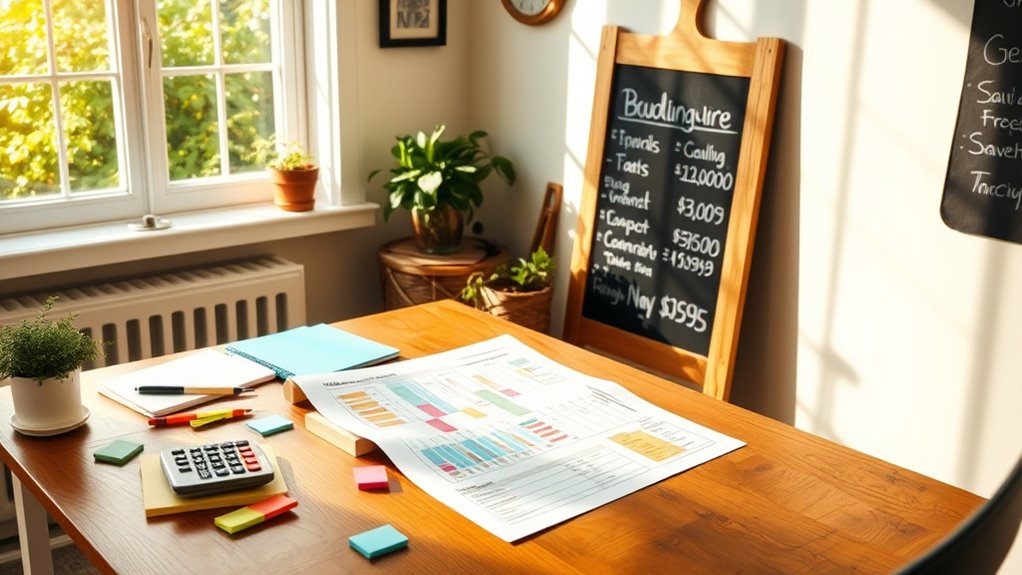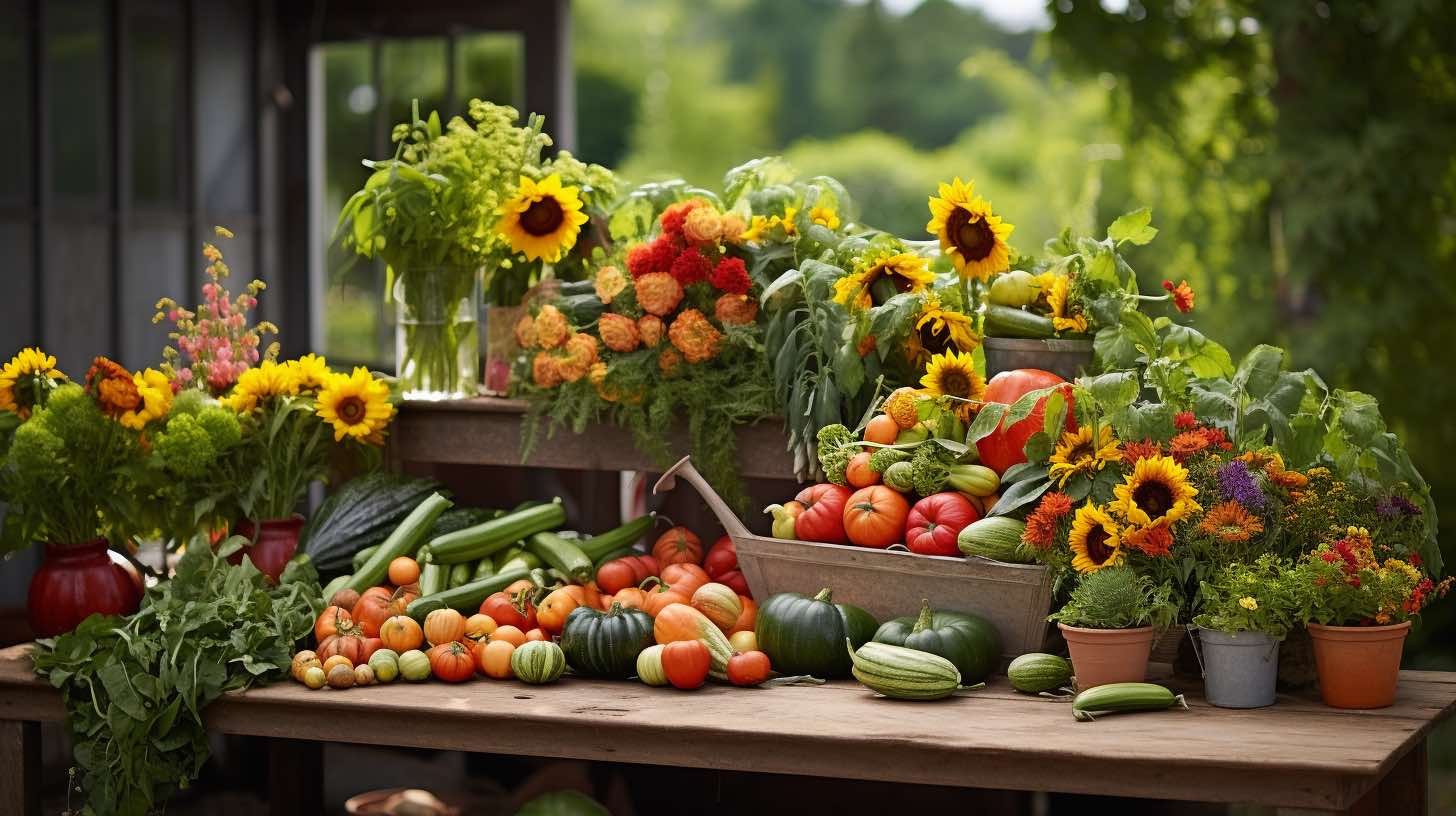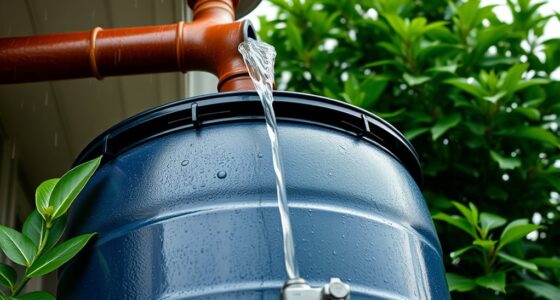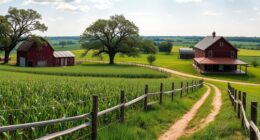To save money on your homestead, focus on sustainable farming to grow your own produce and cut grocery bills. Build DIY renewable energy systems like solar panels or wind turbines to lower utility costs and increase independence. Join community groups and use free resources to get started without spending much upfront. These strategies not only save money but also boost your homestead’s resilience. Keep exploring to discover more ways to maximize your savings and self-sufficiency.
Key Takeaways
- Implement sustainable farming practices like composting and natural pest control to reduce grocery and input costs.
- Build DIY renewable energy systems such as solar panels and wind turbines to lower energy expenses.
- Utilize free online resources, community workshops, and forums for affordable project planning and skill development.
- Grow your own organic produce for savings on groceries and improved food quality.
- Create a resilient homestead by combining cost-effective farming and renewable energy investments for long-term savings.

Have you ever wondered how to make your household finances more manageable? One effective way is to incorporate cost-saving strategies into your homestead. By focusing on sustainable farming and DIY renewable energy, you can considerably reduce expenses while boosting your self-sufficiency. Sustainable farming isn’t just good for the environment; it can also cut your grocery bills by producing your own fruits, vegetables, and herbs. Growing your food minimizes the need to purchase produce from stores, saving you money and ensuring you have fresh, organic options at your fingertips. To get started, plan a garden that suits your space and climate, and choose hardy, local crops that require minimal inputs. Composting kitchen scraps and using natural pest control methods further reduce costs and promote healthy soil, making your farm more sustainable and budget-friendly.
Alongside sustainable farming, harnessing DIY renewable energy can drastically cut your electricity bills. Installing solar panels or wind turbines might seem intimidating at first, but many homesteaders find that DIY installations save a considerable amount on labor costs. Research local regulations and consider starting with small, manageable projects like solar water heaters or small-scale solar panels. These systems can offset your energy consumption and provide long-term savings. Not only does this approach lower your monthly utility expenses, but it also reduces your reliance on grid power, which can be costly and unpredictable. Plus, generating your renewable energy adds to your homestead’s resilience, especially during power outages or emergencies. Additionally, utilizing sulfate-free shampoos can help maintain your highlighted hair’s vibrancy and health, which is an important aspect of personal grooming on a sustainable homestead.
To make these strategies work within your budget, prioritize planning and research. Look for free online tutorials, community workshops, or local experts to guide your DIY renewable energy projects. When it comes to sustainable farming, join local gardening groups or online forums to exchange tips and resources, helping you avoid unnecessary expenses. Budgeting for initial investments, like seeds, tools, or small solar components, is essential, but remember that these costs are offset over time through savings on utility bills and grocery shopping. Focus on creating a self-sufficient homestead where you’re not just saving money but also building resilience and sustainability into your daily life. With a clear plan and some effort, you’ll find that these cost-effective practices pay off, giving you more control over your household finances while living more sustainably.
Frequently Asked Questions
How Can I Start Budgeting With No Prior Experience?
To start budgeting with no prior experience, follow these beginner steps. First, track your expenses to understand your spending habits. Next, set clear, achievable goals for saving and spending. Use simple tools like a spreadsheet or budgeting app. Keep it flexible, review your progress regularly, and adjust as needed. These starter tips will help you build confidence and create a solid financial foundation step by step.
What Are Common Mistakes to Avoid in Homestead Budgeting?
You should avoid common mistakes like falling into investment pitfalls and developing overspending habits. Don’t rush into investments without thorough research, and always stick to your budget to prevent overspending. Track every expense carefully and set realistic financial goals. Remember, impulsive decisions can derail your progress, so stay disciplined and review your budget regularly. These habits help you build a solid, sustainable homestead budget without costly setbacks.
How Do I Adjust My Budget for Unexpected Expenses?
When unexpected expenses come knocking, you need to be prepared. Think of your emergency fund as a safety net—you should regularly contribute to it. Adjust your budget by reviewing your expense tracking to identify areas where you can cut back. Allocate a portion of your funds to cover surprises, and keep revisiting your budget to stay flexible. This way, you won’t be caught off guard when life throws a curveball.
What Tools or Apps Are Best for Homestead Budgeting?
You should try agricultural software like FarmLogs or QuickBooks Self-Employed to manage your homestead budget effectively. These tools help you track expenses, monitor income, and plan for future costs. Expense trackers such as Mint or YNAB also work well, giving you real-time insights into your spending. Using these apps, you can stay organized, identify savings opportunities, and make sure your homestead stays financially healthy.
How Often Should I Review and Update My Budget?
Review your budget regularly to maintain mastery over your money. You should revisit and refresh it at least quarterly, making seasonal adjustments as needed. A thorough yearly review helps you spot surprises and stay on track. By staying consistent, you’ll confidently control costs, catch changes early, and chart a clear course for future financial success. Regular check-ins ensure your budget remains balanced, bright, and built for your homestead’s happiness.
Conclusion
By mastering your homestead budget, you’re taking control of your future. Every dollar you save brings you closer to independence—and maybe even unexpected opportunities. But remember, the true power lies in consistently sticking to your plan. Will you let unforeseen expenses derail your progress, or will you stay the course and open the full potential of your homestead? The choice is yours—what’s next depends on your commitment today.










